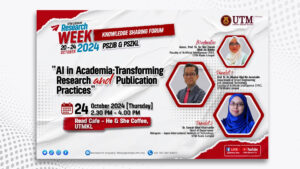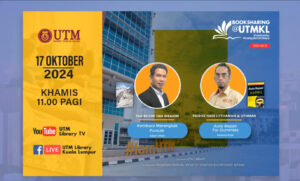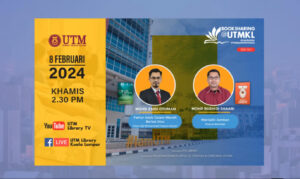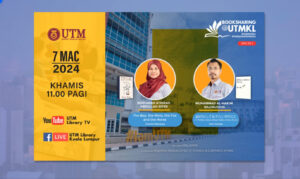113th PROFESSIONAL INAUGURAL LECTURE SERIES: The Art of Crack Propagation In Concrete by Professor Ts. Dr. Abd Latif Saleh (Part 1)
Date: 28th February 2023 (Tuesday)
Time: 9.00 am
Venue: Dewan Seminar, Menara Razak UTM Kuala Lumpur
ABSTRACT
Concrete is a heterogeneous material consisting of coarse aggregate bounded in a relatively soft mortar which itself comprises of fine aggregate, cement and water. During the setting up of the concrete, a large number of microcracks developed, especially at the interfaces between coarser aggregate and mortar even before any load has been applied. When a concrete structure, for example a beam (with or without an initial crack) is subjected to an external loading, the concrete behaves almost linearly elastic. When the load increases, the maximum stress is reached at one of the cross sections and the material is unable to carry more load. The fracture zone will develop due to the development of the microcracks, which are concentrated in a small volume close to this cross section. In the fracture zone, stresses are still carried over what appears to be a visible crack. What appears as a crack on the particular viewing surface of the concrete is in fact a fictitious crack. Even though a discrete, visible crack was seen to exist on the specimen, this crack was not fully formed through the specimen thickness. This fracture zone is replaced by closing force acting on both crack surfaces, and the intensity of these forces is dependent on the crack opening displacement.In numerical analysis, the Fictitious Crack Model (FCM) is used to simulate the fracture zone in concrete. Dual Boundary Element Method (DBEM) is shown to be computationally effective in simulating the crack propagation especially when dealing with the nonlinearity behaviour in concrete such as the fracture zone. Using DBEM and FCM, the crack propagation path does not have to known in advance, since at every step of crack extension, the path is computed simultaneously. When the stress at the fictitious crack tip exceeds the maximum tensile strength of the concrete, the fictitious crack will propagate perpendicular to the maximum principal stress. DBEM and FCM are seen to be very effective models especially when dealing with analysis of cracks in concrete where the crack path is not known in advance. This method can also be applied to analyse crack propagation in reinforced concrete and for pullout tests.











